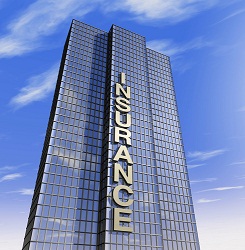 Our main office is now in downtown Baltimore. I love it here. I really do. But driving in Baltimore can be a pain. The daily commute usually involves at least one narrowly escaped crash, jaywalkers deciding to cross right as your light turns green, and the Circulator cutting you off a few times. It’s the price of doing business downtown.
Our main office is now in downtown Baltimore. I love it here. I really do. But driving in Baltimore can be a pain. The daily commute usually involves at least one narrowly escaped crash, jaywalkers deciding to cross right as your light turns green, and the Circulator cutting you off a few times. It’s the price of doing business downtown.
Baltimore’s drivers aren’t the best, but they’re definitely not the worst. That’s because they’re only the second-worst. In 2013, Allstate rated Baltimore’s drivers 193rd out of 194 different cities in the US. D.C. was the only city that fared worse. There is a reason Baltimore car accident lawyers keep pretty busy. While this reality makes our drives a bit more perilous every day, it affects city residents’ wallets in a huge way.
Using Where You Live to Charge You More
Maryland allows insurance companies to use “territory” as a factor when deciding how to set their rates. This allows the insurance companies to say, “You live here. The drivers are horrible here. So we’re going to charge you more to cover for it.”
The insurance companies use all kinds of factors to determine how much to charge you: driving history, how much you drive, the type of car you drive, etc. But the “territorial” factor only looks at where you live, and if that place is Baltimore, you pay more. If the difference in cost was slight, it wouldn’t be such a big deal, but some insurance companies charge astronomically high prices for Baltimore residents. For example, a 23 year-old Baltimore driver is going to pay $400 more in premiums than the same driver living in Anne Arundel County and $300 more than a driver in Baltimore County. Even worse, smaller companies don’t want to touch the Baltimore market, with Keystone and Unitrin charging $2,000 more for city residents.
This is bad even if you’re insured by a big company like Allstate or State Farm. Fewer players in the market equal less competition. And less competition equals higher premiums. This isn’t exactly a new problem either. The last politician that wanted to do anything about it was Governor Paris Glendening, who proposed a plan to force insurance companies to pick up a certain share of the Baltimore market based on their share of the total Maryland market. Still, this was back in 1995, an age when cassette tapes were cool, and the word “blog” was unheard of.
Maryland Does Not Do Much to Help
When I say Maryland “allows” insurance companies to do this, the insurance companies don’t exactly have to jump through many bureaucratic hoops to charge you more. The COMAR regulations only require insurance companies to file a “certification statement” that swears that they “reviewed” the use of territory as a factor, and that they are “actuarially justified” for charging more. Not exactly a high bar to satisfy. Basically, as long as the companies say that they’re justified, without providing more information, they’re free to reach straight for your wallet.
This is yet another factor that makes the cost of living in Baltimore so high. It is hard to fathom why a middle-class family (or anyone) would want to spend an extra $400 on insurance premiums when they could move across the city line and save the cash on car insurance not to mention the difference in the property taxes.
There has been talk in the Maryland legislature, offered by Baltimore based delegates, that Maryland insurance companies should not be able to consider venue in determining auto insurance rates. If this were to become law, the car insurance rates would rise for everyone not living in Baltimore. Most of us reading this don’t live in Baltimore. So the chances of this happening probably rival that of Ray Rice guest hosting “The View” next week.
How to Get the Cheapest Possible Price on Car Insurance in Baltimore
You can get a cheaper price on car insurance. The key is sweat. Spend some time comparing the different companies. There are so many websites that let you compare rates and get information. Talk to the top three. Ask them about discounts. Tell them point blank what you need: as much coverage as possible for the cheapest possible rate. Just make crystal clear what your goals are and sometimes the agents can dig a little deeper to find the discounts or plan that will work best for you. Please don’t skimp on the coverage. For relative peanuts, you can get a lot more protection in the event that someone hits you that does not have car insurance. Finally, make sure you are comparing apples to apples. So many people get burned comparing differing coverages.